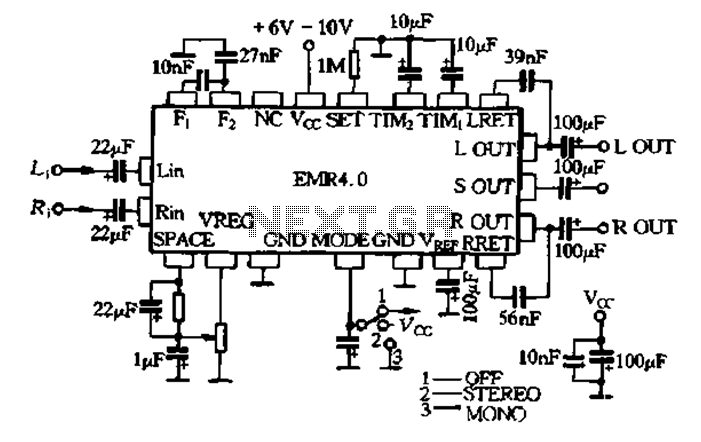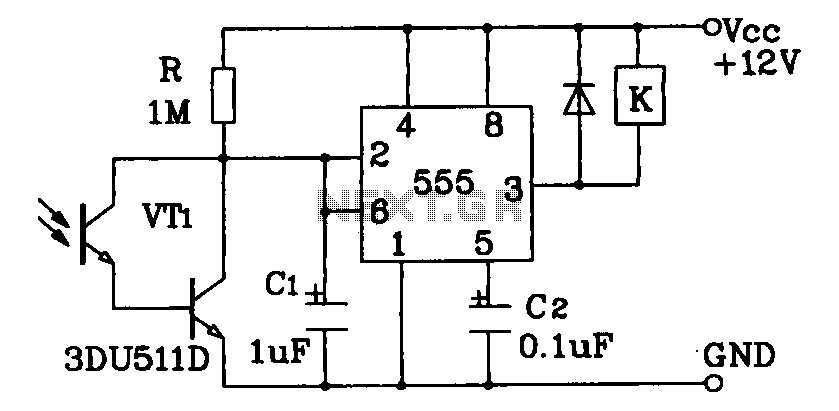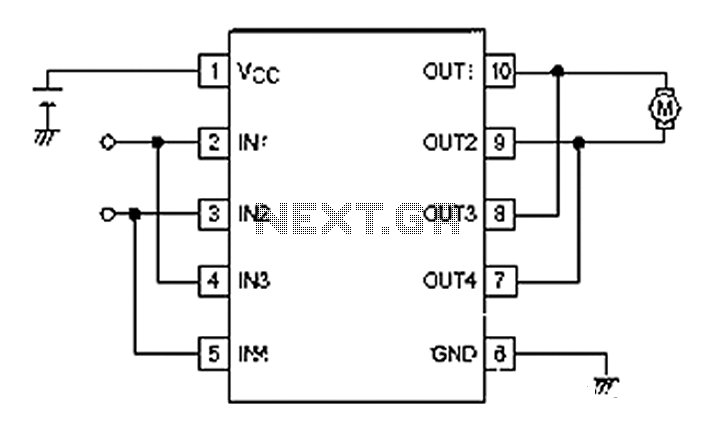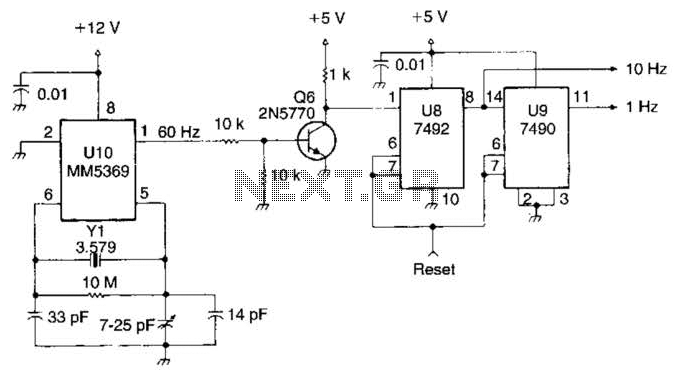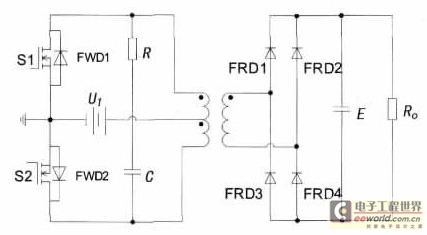
Audio Tube Preamplifier Circuit 6DJ8 / ECC88 SRPP
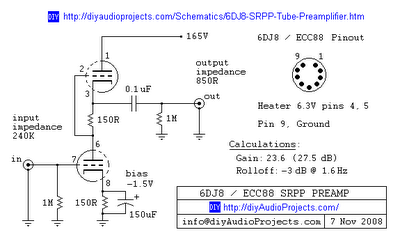
This is one of many available variations for a Symmetrical SRPP Preamplifier based on the 6DJ8 / ECC88 family of tubes. The SRPP circuit has also been referred to as a SEPP, Totem Pole, Mu Follower, Mu amplifier, and Cascoded Cathode Follower. The original name for this circuit is a Balanced Direct and Alternating Current Amplifier (Maurice Artzt, Radio Corporation of America, February 9, 1943, Patent 2310342).
The Symmetrical SRPP (Single-Ended Parallel Push-Pull) preamplifier is an innovative circuit design that utilizes the 6DJ8 / ECC88 vacuum tubes, known for their low noise and high gain characteristics. This configuration allows for improved linearity and reduced distortion, making it ideal for audio amplification applications. The circuit operates by balancing the input signals, which enhances the overall fidelity of the audio output.
The SRPP topology consists of two triodes arranged in a way that one triode amplifies the signal while the other provides a load, effectively doubling the gain without the need for a transformer. This arrangement also helps in maintaining a low output impedance, which is beneficial for driving subsequent stages in an audio system.
In this design, the term 'symmetrical' refers to the balanced nature of the circuit, where both halves of the amplifier work in concert to produce a clean and distortion-free output. The use of the 6DJ8 / ECC88 tubes further contributes to the performance, as they are well-regarded for their ability to handle high frequencies with minimal phase shift and low noise.
The SRPP circuit can be configured for both direct current (DC) and alternating current (AC) amplification, making it versatile for various applications, including in high-fidelity audio systems and professional recording equipment. Its patent, filed by Maurice Artzt in 1943, highlights its significance in the development of audio amplification technologies.
Overall, the Symmetrical SRPP Preamplifier serves as a robust solution for achieving high-quality audio performance, leveraging the unique properties of the 6DJ8 / ECC88 tube family.This is one of abounding accessible variations for a Symmetrical SRPP Preamplifier based about the 6DJ8 / ECC88 ancestors of tubes. The SRPP ambit has additionally been referred to as a SEPP, Totem Pole, Mu Follower, Mu amplifier and Cascoded Cathode Follower.
The aboriginal name for this ambit is a Balanced Direct and Alternating Current Amplifie r (Maurice Artzt, Radio Corporation of America, February 9, 1943, Patent 2310342). 🔗 External reference
The Symmetrical SRPP (Single-Ended Parallel Push-Pull) preamplifier is an innovative circuit design that utilizes the 6DJ8 / ECC88 vacuum tubes, known for their low noise and high gain characteristics. This configuration allows for improved linearity and reduced distortion, making it ideal for audio amplification applications. The circuit operates by balancing the input signals, which enhances the overall fidelity of the audio output.
The SRPP topology consists of two triodes arranged in a way that one triode amplifies the signal while the other provides a load, effectively doubling the gain without the need for a transformer. This arrangement also helps in maintaining a low output impedance, which is beneficial for driving subsequent stages in an audio system.
In this design, the term 'symmetrical' refers to the balanced nature of the circuit, where both halves of the amplifier work in concert to produce a clean and distortion-free output. The use of the 6DJ8 / ECC88 tubes further contributes to the performance, as they are well-regarded for their ability to handle high frequencies with minimal phase shift and low noise.
The SRPP circuit can be configured for both direct current (DC) and alternating current (AC) amplification, making it versatile for various applications, including in high-fidelity audio systems and professional recording equipment. Its patent, filed by Maurice Artzt in 1943, highlights its significance in the development of audio amplification technologies.
Overall, the Symmetrical SRPP Preamplifier serves as a robust solution for achieving high-quality audio performance, leveraging the unique properties of the 6DJ8 / ECC88 tube family.This is one of abounding accessible variations for a Symmetrical SRPP Preamplifier based about the 6DJ8 / ECC88 ancestors of tubes. The SRPP ambit has additionally been referred to as a SEPP, Totem Pole, Mu Follower, Mu amplifier and Cascoded Cathode Follower.
The aboriginal name for this ambit is a Balanced Direct and Alternating Current Amplifie r (Maurice Artzt, Radio Corporation of America, February 9, 1943, Patent 2310342). 🔗 External reference
